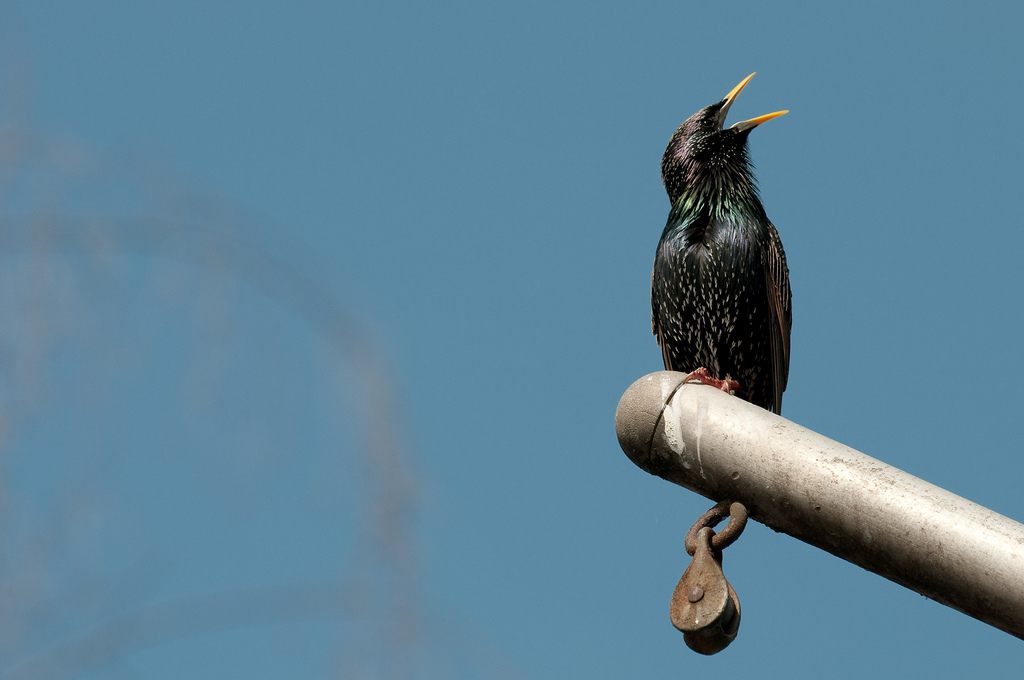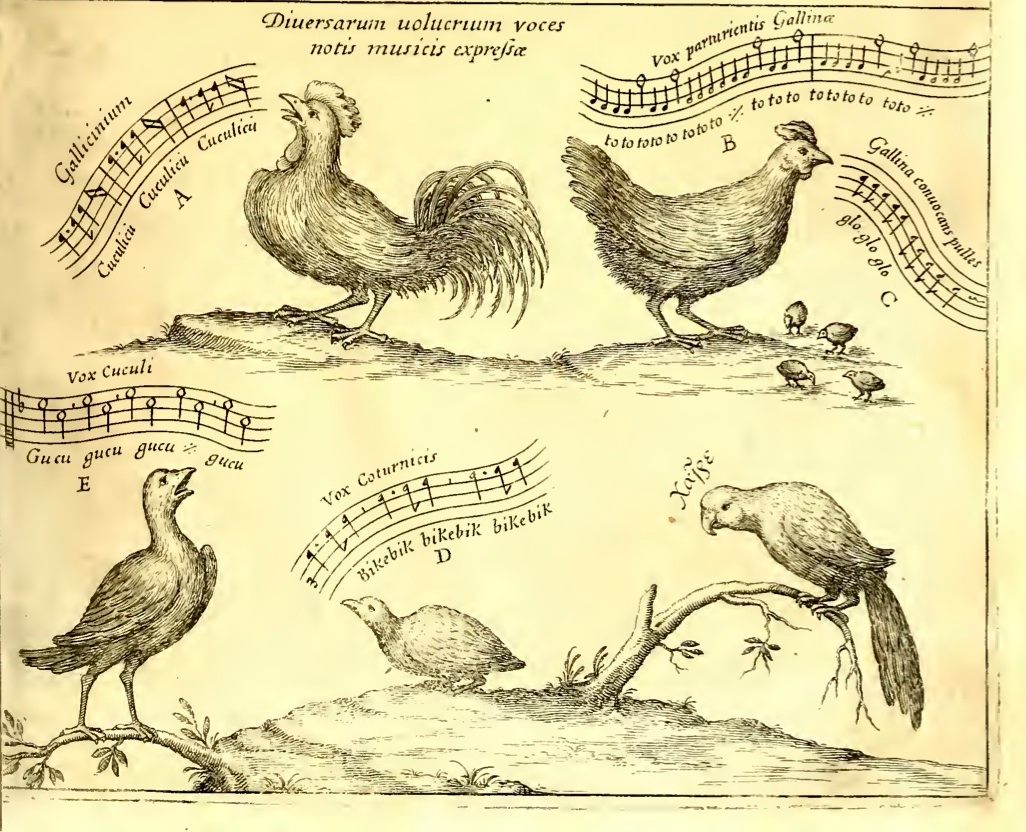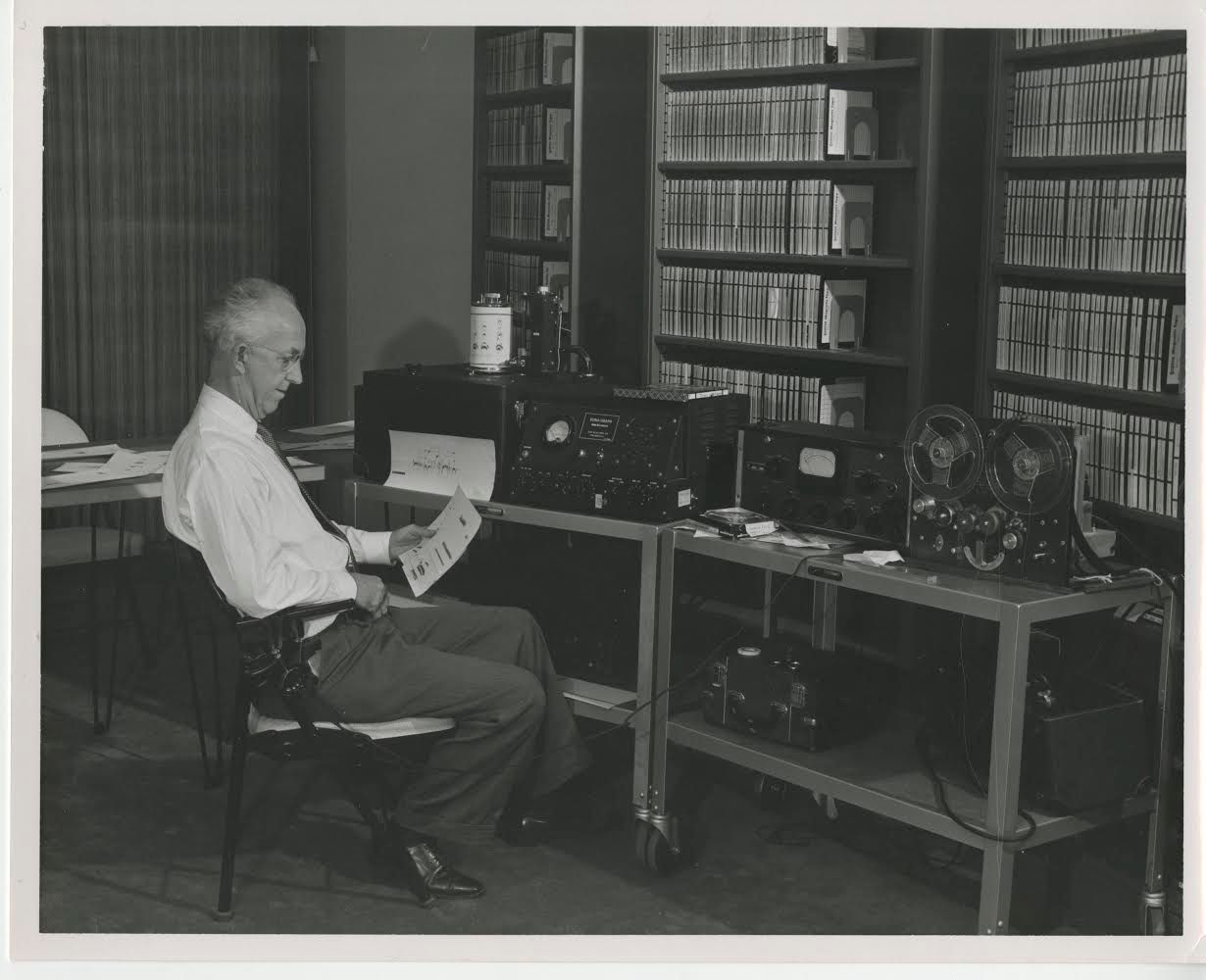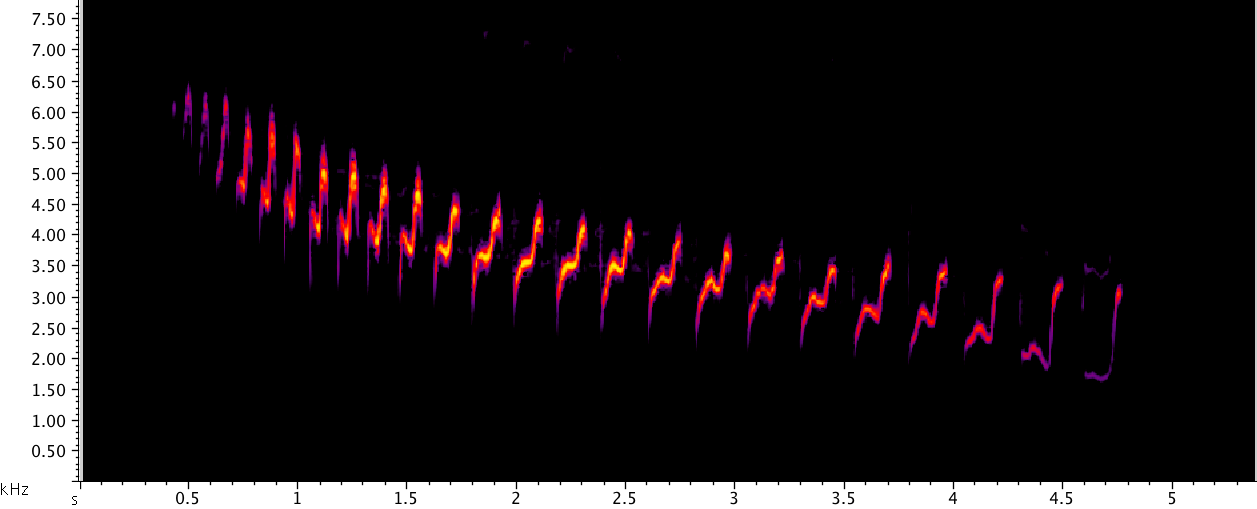The World War II Tool That Changed How We Listen To Birdsong

A bird shows off his mysterious linguistic chops. (Photo: Kenny Louie/Flickr)
In past centuries, birdsong experts tried to distinguish mockingbirds from thrashers by keeping their ears peeled. These days, they’re better served by eagle eyes.
When studying birdsong, contemporary ornithologists use their vision as often as their hearing, picking out unique features of sounds from multicolored smudges they trace in computer windows. This approach owes much to the spectrograph—a technology built in the 1940s to identify warships and enemy radio operators that is now used to deal with much smaller, featherier targets of interest.
Long before this invention, bird fanatics had to make do with words in order to share the chirps they’d heard. “The very early renditions of birdsong amount to prose,” says Greg Budney, curator of audio for Cornell University’s Macaulay Library. Those who wanted to capture a certain bird on the page would try translating its calls into human letters, trusting that their readers would be able to fill in the melodic ups and downs.
Athanasius Kircher, 17th-century polymath, was the first to drape these chirps and twitters over the musical staff. Kircher wanted more than just words because he had something to prove—he was arguing for the existence of a “cosmic harmony,” composed by God and borne out by birdsong. In his transcriptions, from 1650’s Musurgia universalis, a hen clucks in staccato A’s, a cuckoo goes heavy on the downbeat, and a parrot, maybe tone-deaf, simply says “χαίρε”—Greek for “hello.
Ferdinand S. Mathews, an American naturalist, scored the songs of over a hundred wild birds in this way for his 1904 opus, Field Book of Wild Birds and Their Music. Mathews also saw his endeavor as something more than science—“I believe the birds with their music are the revelation of a greater world,” he wrote in the introduction. But his chief purpose was to keep the songs “in a state of scientific preservation,” and he found musical notation to be the best possible formaldehyde.

Athanasius Kircher’s singing menagerie, the first known example of musically notated birdsong. (Image: Musurgia universalis/Petrucci Music Library Public Domain)
Increasingly, though, his fellow experts felt this wasn’t enough. “It was basically impossible to do anything in a really quantitative, numerical way,” says Russ Charif, an acoustic biologist at the Cornell Lab of Ornithology—and when people tried, they ran into the limits of their own ears. “How long were the songs, what were the spaces between notes … in some cases, it could even be challenging to count the notes, because in many bird songs, they’re very fast.”
When birdsong experts did keep up, their language failed them. Western musical notation is great at getting across certain aspects of sound, but it leaves some important things out completely—it excludes pitches and rhythms that fall between regular intervals, and it doesn’t deal at all with timbre, the quality that makes a note played on, say, a guitar, sound different from the same note played on a piano or a banjo. Put simply, notation was built to serve particular types of human music, and, as biology teacher A.A. Saunders wrote in a 1915 letter to British birding magazine The Auk, “birds do not usually sing according to such standards.”
To deal with these shortcomings, ornithologists began inventing their own notation. Saunders’ type, which involved plotting swoops, chirps and trills on a 12-by-10 grid, led him to carry a tuning fork, a stopwatch, and graph paper in his pocket wherever he went. In 1924, a pair of field biologists employed Morse Code-like dots and dashes to compare and contrast nearly 200 sparrow songs. Soon after, naturalist Lucy Coffin suggested turning to Chinese or Gregorian scales, and involving “a battery of instruments … [including] the banjo, the zither, the metal piccolo, and the bassoons.” Mostly, though, she despaired: “We have standardized our color-scheme in ornithology, we have named each part of a bird’s anatomy, but we have devised no symbols to convey to our associates an adequate description of bird-call.”

Ornithologist L. Irby Davis examines a spectrogram from an early Kay Elemetrics Sona-Graph, in the 1950s. (Photo: ©2015 Cornell Lab of Ornithology)
Then World War II came. Suddenly, the United States found super-detailed analysis of sound to be a matter of national security. Beginning in the early 1940s, scientists at New Jersey’s Bell Laboratories ramped up work on the sound spectrograph, a machine that could chew sound waves into data and spit them back out as images. “They were interested in the signatures of submarines, and ships in general,” says Budney. After the war, when the technology was declassified, a company named Kay Elemetrics began making their own version, called the Sono-Graph. Birders, sensing an answer to their troubles, flocked to it, says Budney. “That is when things took off.”
When they started feeding their favorite songs through the machines, ornithologists discovered all kinds of details that, audible or not, had fallen through the cracks of previous notations. Pitches soared up and down the y-axis, and timbre was visible as ghostly traces above the main melodic line, called overtones. “For the first time, the extraordinary virtuosity of the avian voice was revealed in all its glorious detail,” writes Peter Marler in his history of birdsong, Nature’s Music.
Scientists could also pursue lines of inquiry that would have been unthinkable before. The advent of sound spectrography was “truly revolutionary,” Charif says, a turbo-boost in the middle of the slow advancement that often characterizes science. It “opened up a whole new world of kinds of things that people could do.” Comparing and contrasting sonograms has allowed us to learn about not just what birds sing, but how they learn their songs, how many they know, and exactly how local bird dialects vary. Today, ornithologists at Cornell are using them to census species that migrate at night, and to see how blue jays and another birds pack information into particular alarm calls.

The song of the southwestern Canyon Wren, through a spectrograph. (Image: Cornell Lab of Ornithology)
Indeed, spectrographs are such a staple of contemporary ornithology research that asking about their latest uses “is like asking an accountant ‘Are you doing anything that uses spreadsheets?’” says Charif. “When you’re publishing a research paper you’re going to analyze sound,” agrees Budney. Since the seismic shift the spectrograph caused in the 1950s, the field has changed by degree—spectrography has gotten “faster and easier and cheaper,” able to record more sound at a time or to work in stereo, but no new big thing has come along to replace it.
But there’s one small thing that spectrographs still can’t do—they can’t help birdwatchers identify birds. The brushstrokes of spectrograms, though often aesthetically pleasing in themselves, do not immediately suggest familiar trills. One field guide from the 1970s tried to get the public into the spirit by printing small spectrograms next to their respective species, but it was a flop. Even Charif, who has worked with spectrograms since 1979, says he can “kind-of sort-of” hear spectrograms in his head, and only then if they’re pretty simple (“I think others may be better,” he says).
For that, though, we still have the old ways. “Every major field guide to birds has a description of voices,” Budney says. And if you want to go really traditional, Mathews’ Field Book of Wild Birds And Their Music is still available in paperback, last-century musical notation and all.
Naturecultures is a weekly column that explores the changing relationships between humanity and wilder things. Have something you want covered (or uncovered)? Send tips to cara@atlasobscura.com.












Follow us on Twitter to get the latest on the world's hidden wonders.
Like us on Facebook to get the latest on the world's hidden wonders.
Follow us on Twitter Like us on Facebook